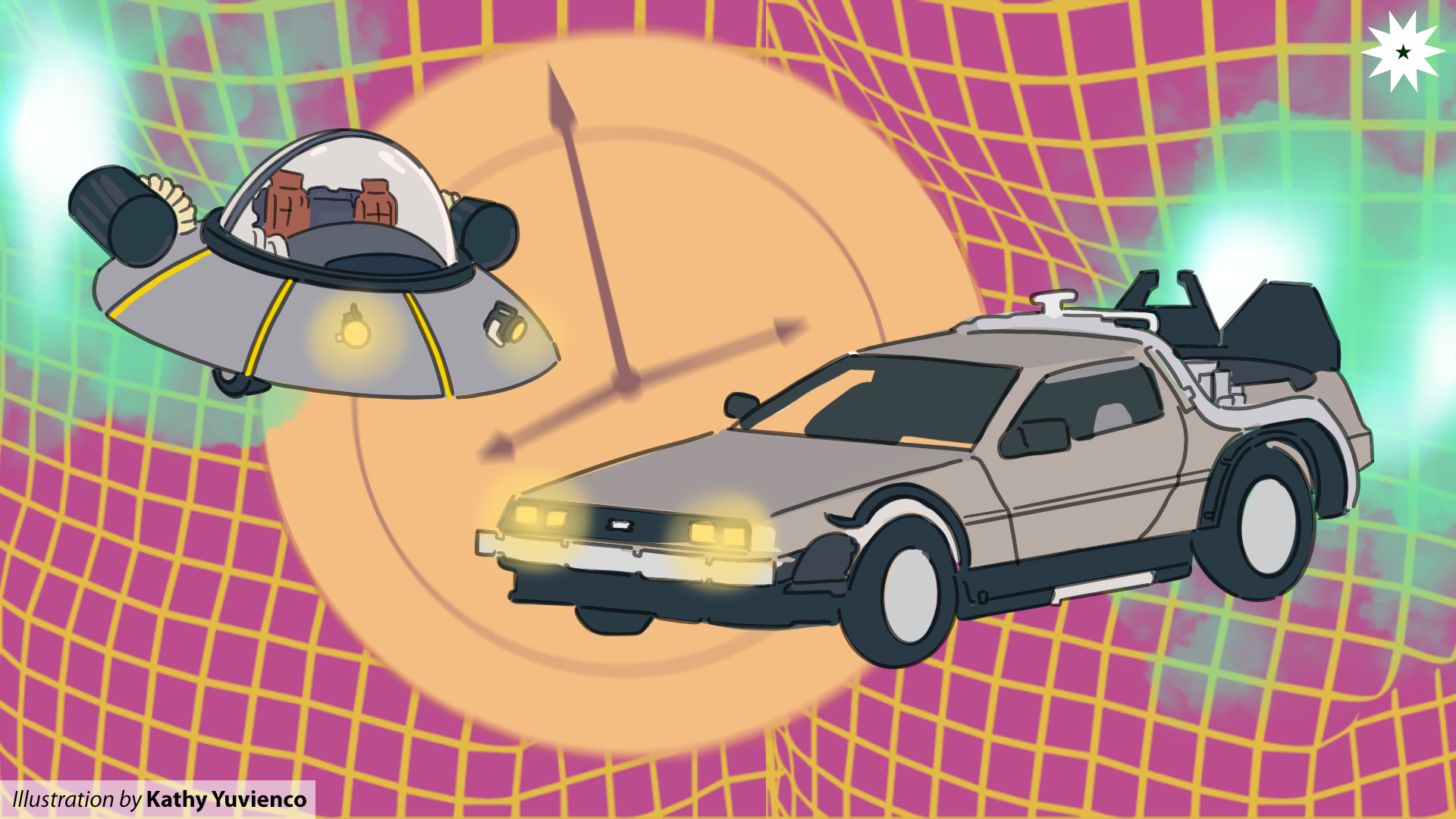Time travel has been viewed as a work of fiction usually brought to life in popular media where audiences see what-could-be or what-could-have-been through glimpses of the future or flashbacks from the past. Highlighted in films such as Interstellar and Back to the Future, the very concept of traversing through time remains an unsolved mystery in physics.
At present, what makes time travel intriguing is not only the thought-provoking plotlines it produces but also its plausibility outside cinemas. For years, there have been many speculations developed and theories raised regarding time travel and its most possible methods of execution. However, what seems doable ends up being impossible given the fact that no man—maybe apart from Albert Einstein—has completely grasped the concept.
The aforementioned films, no doubt, were influenced by scientific theories such as quantum physics; the fourth and fifth dimensions; bootstrap paradox, which describes how objects or information are passed from the future to the past; and massive time discrepancies between Earth and farther reaches of space. Specifically, Interstellar banked on the logic of having time pass by slower in the planet close to the black hole, implying the massive effect of the dark gargantuan gravitational field.
In terms of testing the validity of these theories, Dr. Emmanuel Rodulfo, a full professor from DLSU’s Physics Department, argues that half of what is presented in popular media is purely speculative, “Physics is still looking for ways to travel backward in time. Until you get the theory right, everything is speculation, when it comes to traveling to the past or modifying the past.”

Pursuing the future
Traveling to the future? Rodulfo claims in an interview with The LaSallian that we are already accomplishing that now, “If you want to go ahead of the rest, that’s entirely possible in principle. All you need is a spaceship fast enough [to] approach the speed of light,” he explains.
The professor affirms that such a concept is not limited to science fiction, citing that it is justified by Einstein’s Theory of Special Relativity, which explains how space and time are stitched together for objects approaching the speed of light. In Relativity, motion is analyzed in a fourth dimension known as spacetime.
Spacetime, a concept that extends the conventional Newtonian physics by assuming that space and time are treated together as one entity, is a mathematical model that is used to visualize effects of relativity, such as time dilation. This consequence, stripped to its simplest form, is the difference in time perceived by two observers from different reference points in relative motion.
But time dilation is not only limited to being a theory. The Large Hadron Collider (LHC)—a machine that attempts to solve many problems in particle physics, such as the origin of mass and explaining dark matter and dark energy, by smashing two particles together at relativistic speeds—is an example of a device that demonstrates the said concept. These particles, Rodulfo states, have microsecond lifetimes, but once accelerated, are prolonged by time dilation. The machine is capable of accelerating subatomic particles close to the speed of light, which already is, in its essence, time dilation.
A series of paradoxes
Despite being presented a promising chance at going into the future, Rodulfo warns that going backward in time is a different story. He explains, “Getting around the paradoxes is what’s challenging us… You can go back to your past and mess with yourself [to] prevent [yourself] from earning a degree or from enrolling in this University. Time travel to the past runs into self-contraditions—it makes negatives of negatives in circles.” In physics, paradoxes are lapses in logic and are the main reason preventing physicists from accomplishing time travel.
Mathematically, according to Rodulfo, there are solutions to Einstein’s equations—10 questions which comprise his General Theory of Relativity. However, he clarifies that having solutions explained mathematically is not a guarantee that it could be applied in reality.
Nevertheless, Rodulfo hints at an alternative way for mankind to go back in time—the quantum theory of gravity. This is a unified theory of all the known interactions: electrodynamics, strong and weak nuclear forces, and gravity. Dubbing it as “the dream”, Rodulfo bares that no fruitful outcomes have turned out despite attempts to explain the quantum field theories.
Scientists today are still stumped when it comes to actualizing time travel, but the fact that theories and machines such as the LHC exist prove that mankind, at the very least, has a chance in achieving that goal. Perhaps, in the distant future, films will not be the only gateway for mankind to visualize time travel. Until then, going back to the past will be pure conjecture.
